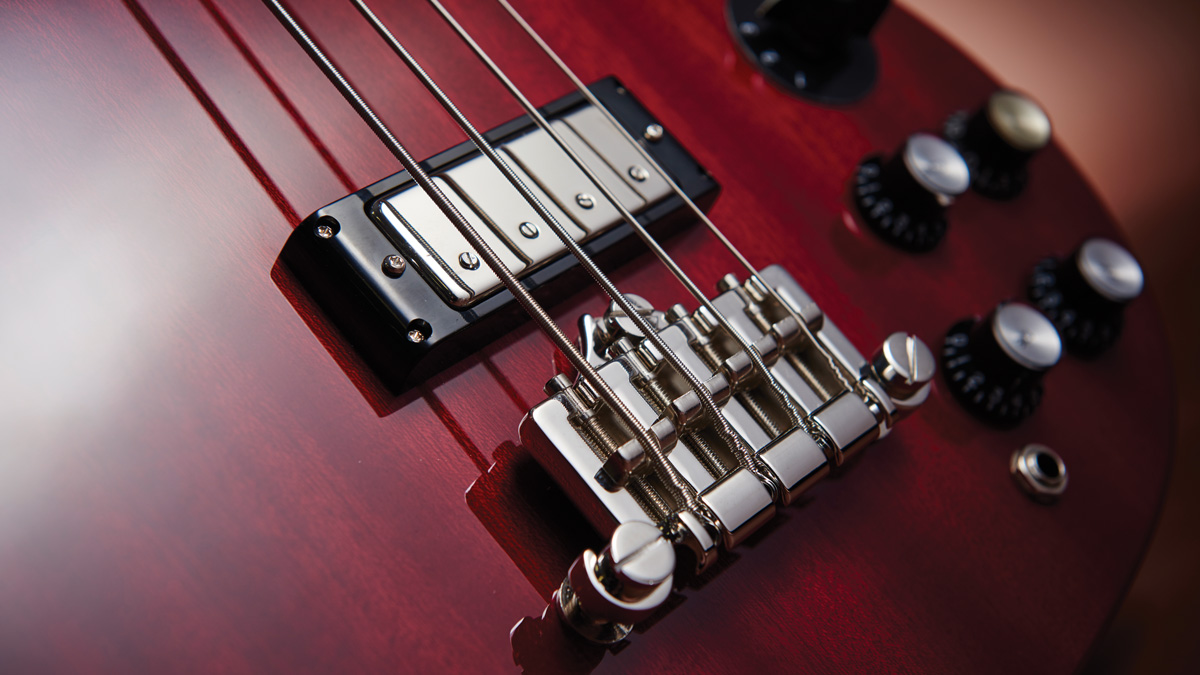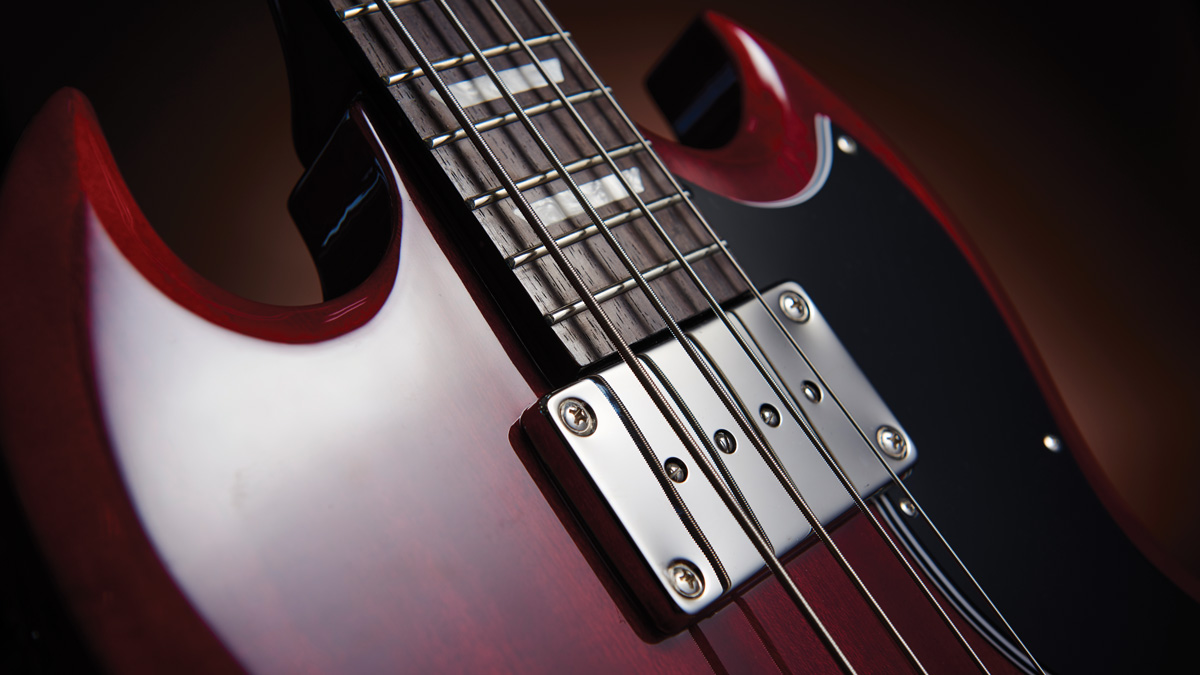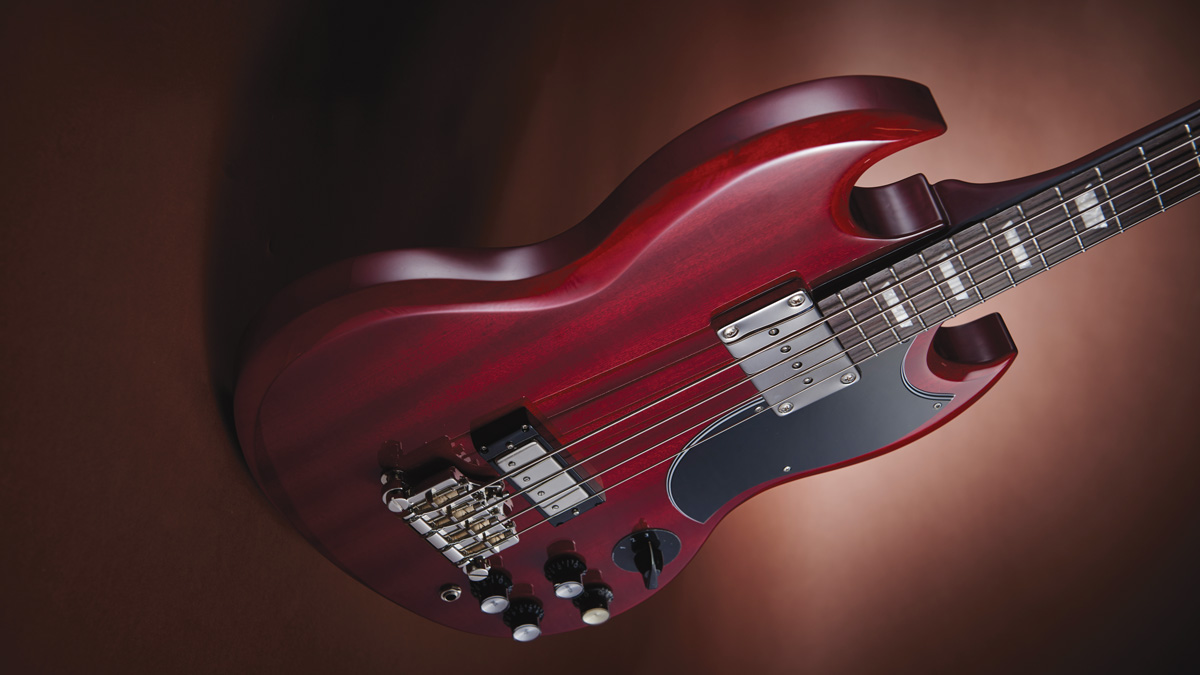MusicRadar Verdict
Epiphone should be congratulated for producing a very good bass at an even better price.
Pros
- +
A great recreation of a classic bass design.
Cons
- -
A different playing experience compared to more modern basses.
MusicRadar's got your back
The Gibson EB-3 bass rose to prominence in the 1960s in the hands of Jack Bruce, John Entwistle, Bill Wyman and other iconic bass players.
Its short scale and unique look were a winning combination, coupled with a rock tone that still impresses today. This new Epiphone model seeks to capture the essence and character of the original, and at first glance it appears to have got the visuals right - but then you look at the price tag and inevitably begin to question its quality. Read on, you may be in for a shock!
Build
Straight out of the box, the EB-3 feels robust, but at 3.9 kilos, it’s far from a heavy beast. Due to its design and dimensions, there is some noticeable headstock dive, and it’s a paddle of a headstock, although this is rectified once placed on a strap.
In practice, the bass feels as though it should be worn at midriff height or lower: it doesn’t really work when played in a higher position. Some of this is related to the upper strap button positioning behind the neck joint.
The rich cherry red stain allows the grain of the mahogany to stand out, and a vintage vibe is maintained with the inclusion of the three-ply black scratchplate. The body depth is significant despite the beveled edge around the entire front and back of the body.

The lower cutaway is slightly restrictive in terms of access to the upper frets, and while the neck dimensions are a little idiosyncratic with a full, deep profile, a narrow nut width, low action and 18mm string spacing more than compensate, making the EB-3 a very playable instrument. The finishing is of a high standard with no sharp fret ends, and the trapezoid neck inlays complete the vintage visuals, with white dots used as position markers along the side of the neck.
The bulky bridge, old-style volume and tone controls, three position pickup selector and elephant ear machine heads all contribute to the retro vibe, while the nickel hardware sets everything off nicely. The quality of the hardware is very good: the tuners turn smoothly, as do the controls, while the quick-release nature of the bridge is a bonus. Aesthetically, this is an impressive instrument.
Sounds
We noticed early on that hand positioning and fretting take a little getting used to, but once the player adjusts to that, the instrument is very playable and resonates very well, the set neck and mahogany timber providing a good harmonic response across the whole instrument. Plug in and the ballsy tone you expect is presented to you in all its glory.
With both pickups on, volume up and the tone controls open, you can hear the rock tone of yesteryear clearly: fat, solid and in your face. There is nothing polite about the tone of this bass, although playing with the tonal options available opens up some interesting sounds.
Soloing the neck pickup highlights the warm, rounded bass tone that has become associated with Gibson basses over the decades. On its own, the fundamental tone is ballsy although it needs the tone control open in order to get a full tonal character - otherwise it can sound a bit fluffy and indistinct.

Switching to the bridge pickup, a clanky piercing treble is instantly achieved, and although there is some definite midrange honk going on, the bridge humbucker on its own doesn’t work so well. However, add this pickup into the mix along with the neck pickup and it suddenly makes sense, with the pickups complementing each other.
Regardless of whether you play fingerstyle or with a pick, there are some great tones available from this bass. Experimentation with the controls will pay dividends in the long run.
This instrument’s 34” scale, compared to the shorter scale of the original, gives it a clearer, more defined voice that works especially well for rock players. The sustain and all-round tone should also be commended. We still don’t understand why you would want a pickup selector when each pickup has its own volume control - but there you go.
We’re pleasantly surprised by the calibre of the EB-3, and amazed at what a proficient bass Epiphone has delivered at this pocket-friendly price point. For any player starting out, or for fans of this era, you really can’t go wrong at this price. Just remember to wear it low!
"It was ugly, like watching a divorce between four people. After a while, I had to get out": Beatles engineer Geoff Emerick on the recording of Abbey Road, track-by-track
"I said, “What’s that?” and they said, “It’s what Quincy Jones and Bruce Swedien use on all the Michael Jackson records": Steve Levine reminisces on 50 years in the industry and where it’s heading next
“Excels at unique modulated timbres, atonal drones and microtonal sequences that reinvent themselves each time you dare to touch the synth”: Soma Laboratories Lyra-4 review










